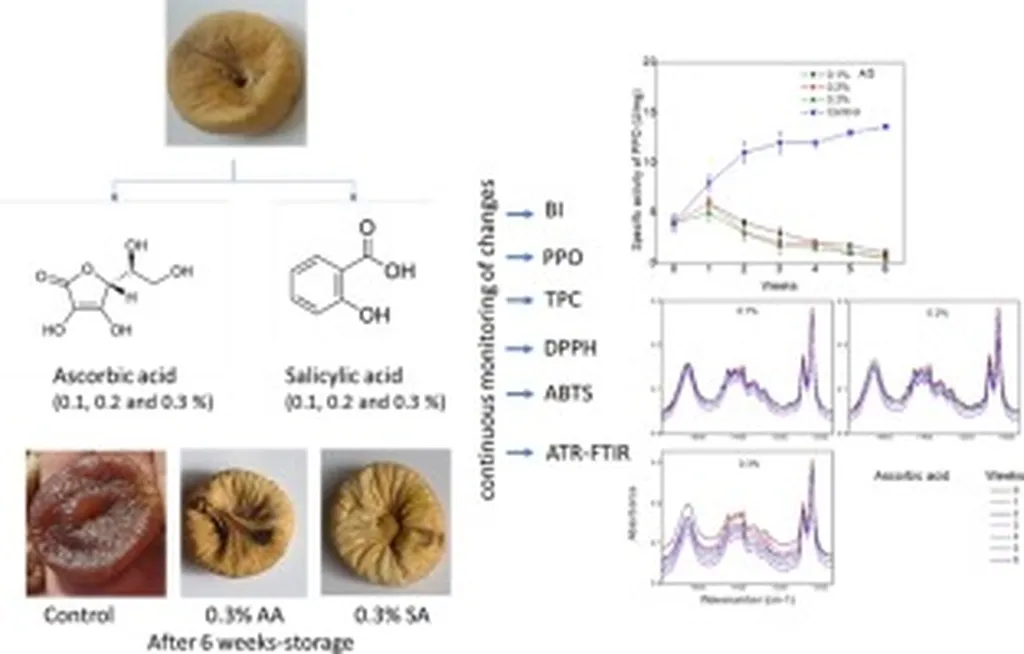In the quest to extend the shelf life and maintain the quality of fresh-cut produce, researchers have made a significant stride with lotus root slices. A recent study published in *Food Chemistry: X* reveals a promising strategy that combines pre-peeling salicylic acid (SA) treatment with post-slicing melatonin (MT) application to inhibit browning and preserve the physicochemical properties of lotus root slices. This breakthrough could have substantial commercial implications for the agriculture sector, particularly in the fresh-cut produce market.
Browning is a major challenge in the fresh-cut industry, often leading to reduced shelf life and quality degradation. The study, led by Suriyan Supapvanich from the Innovative Tropical Agriculture Program at King Mongkut’s Institute of Technology Ladkrabang in Thailand, explored the combined effects of SA and MT on browning inhibition and quality retention in lotus root slices. The optimal conditions identified were 3 mM SA for 30 minutes and 0.1 mM MT for 5 minutes.
The researchers found that the combined SA and MT treatment was more effective than either treatment alone. “The integrated application of SA and MT not only suppressed polyphenol oxidase and peroxidase activities but also preserved firmness by reducing polygalacturonase, β-galactosidase, and cellulase activities,” explained Supapvanich. This dual treatment also enhanced antioxidant capacity, total phenolics, and flavonoids, while lowering H2O2 content and lipoxygenase activity, thereby mitigating oxidative stress.
The study’s findings suggest that post-slicing MT alone can achieve similar browning control but is less effective in texture preservation. The combined approach, however, offers a comprehensive solution for maintaining the visual quality and firmness of fresh-cut lotus root slices during storage at 4°C for up to 12 days.
The commercial potential of this research is substantial. Fresh-cut produce is a growing market, with consumers increasingly seeking convenient, ready-to-eat options. However, browning and texture degradation have been significant barriers to extending the shelf life of these products. The integrated SA and MT treatment could provide a practical and effective solution for producers, enhancing the quality and longevity of fresh-cut lotus root slices and potentially other fresh-cut produce.
As the agriculture sector continues to innovate, this research highlights the importance of exploring combined treatments to address multiple quality degradation pathways simultaneously. The findings could pave the way for further studies on the application of SA and MT in other fresh-cut products, ultimately benefiting both producers and consumers.
In the words of Supapvanich, “This study opens up new possibilities for maintaining the quality of fresh-cut produce, and we hope it will inspire further research in this area.” With the growing demand for fresh, convenient, and high-quality produce, the integration of SA and MT treatments could be a game-changer for the agriculture sector.

